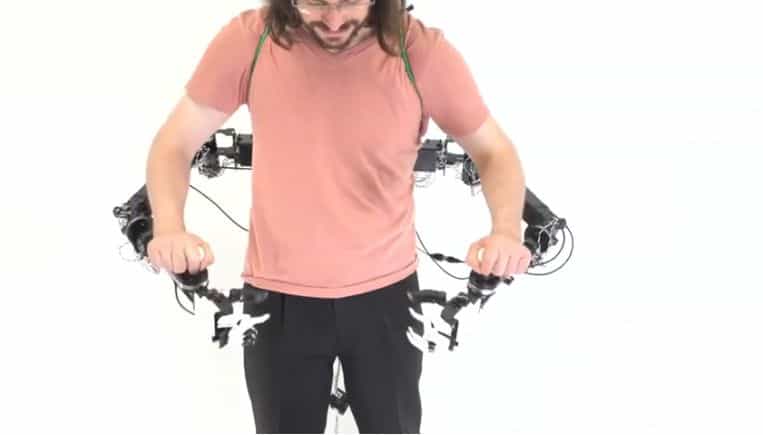Japanese and French engineers created a wearable pair of hands to help interact with objects. For example, a user can pick up a tray with robots, fix them in one position, and then transfer various objects onto the tray with their own hands. The development will be presented at the SIGGRAPH Asia 2019 conference.
As a rule, wearable robot arms are prostheses to compensate for lost human abilities. But some engineers also create additional wearable robot arms that expand the capabilities of people. Most often, such devices are a pair of hands fixed on the back in the region of the belt. This allows the new pair of hands to be positioned in much the same way as real hands.
The main problem in this area is the lack of convenient control schemes. For example, in 2017, the Japanese proposed using leg movements for this and then created a pair of hands controlled by another person. In addition, in 2018, researchers showed that using the neural interface, people can simultaneously perform different tasks with their own hands and connected robot arm, however, in everyday life, such an interface is not yet possible.
Another group of engineers from Japan and France, led by Masahiko Inami from the University of Tokyo, proposed a different approach to managing wearable robots. They used the classic design, in which the robot arms are fixed on the back. At the same time, their robot arm has an important difference: on the wrist of each hand, there is a lever that allows you to control the movement of the hand in the right direction, as well as compress or unclench the fingers of the hand.
The user can perform complex actions in two stages: first, grab the item with robot arms and fix it in the right position, and then do it yourself with your own hands. In addition, robot arms can be programmed. To do this, the user can take control of levers and show the movements he needs. Also, the robot arm can independently apply auxiliary force when lifting large and relatively heavy loads.
There are other approaches to creating wearable robots. For example, in the spring, American engineers presented a prototype of a folding inflatable robot arm, which, if necessary, can be removed from a bag on the belt and inflated.
